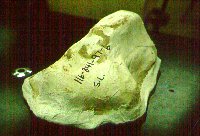Dinosaur Bone Preparation II. In the Lab.
The Hanson Ranch Research Station Project
The plaster cap can usually be removed either by sawing around the edges and prying it off, or by wetting the surface of the plaster on the side to be removed and carefully prying the cap away from the exposed lower surface of the pedestal.The preparator in this case was Josh Long, a senior Biology student headed for Medical School.
Photos © 1999 J. Long
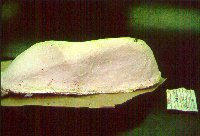
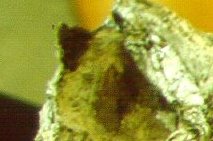
The worker must be fastidious, careful, patient and persistent, all qualities that Josh exhibited magnificently as he processed this specimen over a five week period. The first signs of bone begin to emerge as Josh removes the matrix from around the bone.
Photos © 1999 J. Long
`
The first evidence of the nature of the specimen is revealed by a gentle curvature turning into a sudden break typical of mandibular fragments. At this point Josh works to stabilize the bone fragments in their taphonomic positions. Some preparations would be dedicated to restoring the fragments to anatomically correct positions, but we are more concerned with how the bones came to be where they are (taphonomy), and only secondarily with anatomical restoration. .
Photos © 1999 J. Long

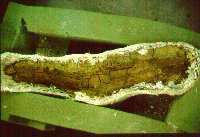
The tooth line begins to emerge as Josh c a r e f u l l y removes, almost grain-by-grain, the matrix from the gumline. By this time Josh has been at the restoration for about 20 hours.
Photos © 1999 J. Long
The general outline of the toothrow is exposed as Josh works on, removing the matrix with a combination of dental picks and brushes. There are many fragments of bone mixed in with the matrix, possibly the remnants of pre-emergent replacement teeth.
Photos © 1999 J. Long
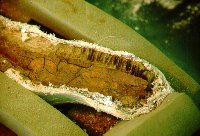
Back 
 Next
Next
| ||||
| |||
| ||||
| |||
| |||
Back 
 Next
Next
